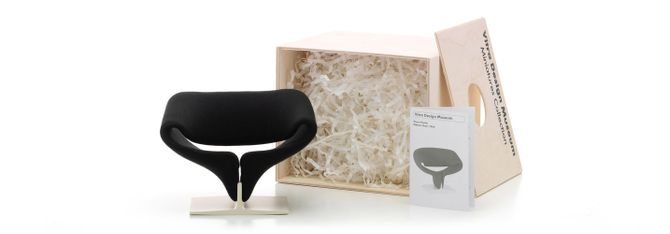
Miniatures Collection - Ribbon Chair
Pierre Paulin, 1966
The seat, backrest and armrests of the chair have a unified metal frame that is completely covered with foam upholstery and stretch fabric. The seat is mounted on a lacquered pedestal made of pressed wood. The de-velopment of the Ribbon Chair was facilitated by technological innovations during the Sixties, which led to the production of inexpensive synthetic foams. This period also saw the introduction of novel elastic fabrics that could be used to envelop a complex contoured shape without folds or intricate seams. The biomorphic, slightly resilient seat of the Ribbon Chair allows a wide variety of sitting positions and provides a high degree of seating comfort.
Miniatures Collection
Durante más de dos décadas, el Vitra Design Museum ha hecho réplicas en miniatura de las piezas más importantes de su colección. La Miniatures Collection es un compendio de la historia del diseño de mobiliario industrial, desde el Historicismo y el Art Nouveau hasta la Bauhaus y la Nueva Objetividad, desde el Diseño Radical y el Posmodernismo hasta nuestros días. Con un tamaño que es exactamente un sexto del de los originales históricos, las sillas son fieles a la escala y reproducen hasta el menor detalle de construcción, material y color. La autenticidad llega incluso a la veta natural de la madera y a la reproducción de los tornillos y las complejas técnicas artesanales utilizadas. Por este motivo, las miniaturas se han convertido en objetos de colección muy populares y en un material didáctico ideal para universidades, escuelas de diseño y arquitectos.